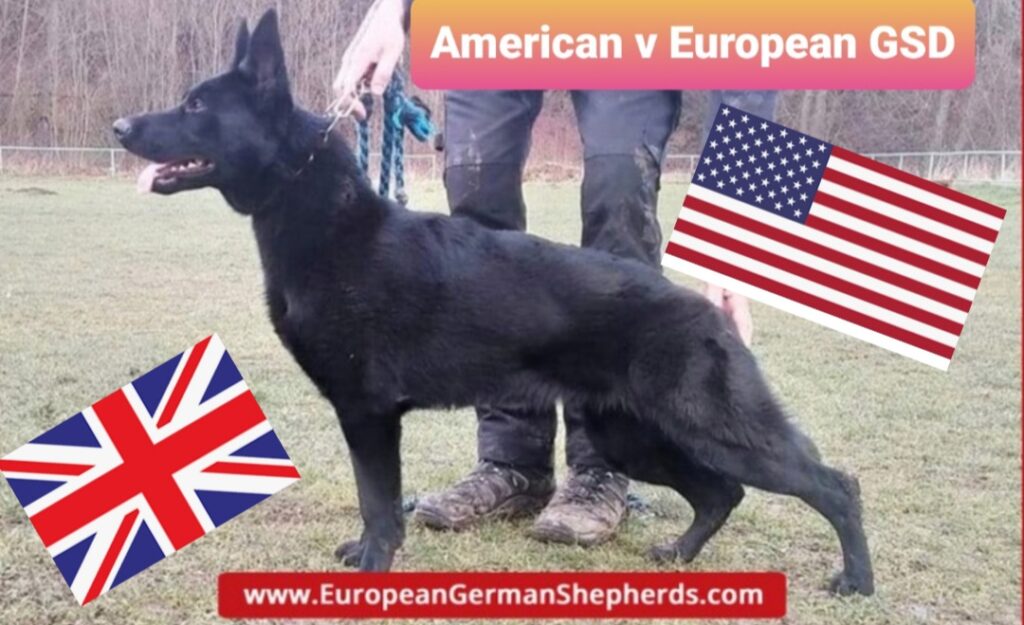This Article will help to identify the difference between a American German Shepherd and a European German Shepherd.
To differentiate we need to know about their bloodlines, characteristics and breeding standards.
The primary indicator is the physical attributes and health concerns, although they are the same breed some of the features of their build are different.
American GSD’s are larger than the European GSD’s with a sloping back, European GSD’s have a straight back and shorter bodies.
Health issues of each breed.
American GSD’s are more prone to some health issues such as hip dysplasia due to the slanted body and fewer health checks.
European GSD’s have less chance of hip dysplasia due to more endurance, stability and strict standardized breeding and training.
Hip and Elbow dysplasia
Hips dysplasia is the most common genetic problem in the German Shepherds, it differentiates between mild conditions to severe causing pain in their joints.
Hip dysplasia is the most common inherited orthopaedic problem. It is also the biggest cause of hind leg lameness.
Dysplasia means “abnormal development” and dogs with this condition develop painful degenerative arthritis of the hip joints.
Heart Disease
The most common disorder affecting German Shepherds is called Dilated Cardiomyopathy (DCM) also known as an “enlarged heart”.
This occurs when the ventricles, or heart chambers become larger and the cardiac muscle surrounding them becomes thinner causing a change in the shape of the heart; as a result this restricts muscle contractions and the effectiveness of the valves, leading to problems such as irregular heartbeats and the backflow or leakage of blood through the valves.
The Eyes.
There are a range of eye conditions that can affect dogs like progressive Retinal Arophy (PRA) and Pannus (Chronic Superficial Keratitis)
PRA is a progressive disease that leads to blindness. It can develop at around two years of age in a GSD, it is caused by the degeneration of the Retina at the back of the eye developing causing the Retina to die. The main cause of this is genetics, however trauma or other diseases may cause PRA.
Pannus (Chronic Superficial Keratitis) is a disease that affects the Cornea, the iris, Pupil and the transparent layer of the eye. The first signs of Pannus are a pink lump towards the inside of the eye in one or both eyes.
Protect German Shepherds from Health risks.
GSD’s with European bloodlines have a lesser chance of acquiring hip problems and other health issues because of their straight and balanced posture and health checks.
American GSD are more prone to some health problems like hip dysplasia due to it’s slanted body causing pressure on the joints.
Another way to distinguish American German Shepherds from the Europeans GSD’s is by understanding their breeding standards and different regulations.
The European GSD breeding standards are regulated by the GSD club of Germany (SV).
Moreover, American GSD breeding standards are regulated by the American Kennel Club (AKC).
GSD’s with European lines need to pass the test of obedience, health and temperament while the American GSD breeding standards has no such requirements.
GSD with European bloodlines are bred and trained based on the standards set by captain Stephanitz to be fit in working environments.
American GSD’s are raised to have good shape, movement and appearance and excellent in dog show performance.
Breeders of GSD’s with European bloodlines are so concerned with maintaining higher standards of health, temperament and agility.
Due to the higher standards of breeding system required for European GSD bloodlines they become more expensive compared to American German Shepherds.
It is important to understand the difference between American GSD’s and European GSD’s.
Having knowledge about their own characteristics will be a good foundation for having an amazing companion.
Written by Libbie-May Yates
